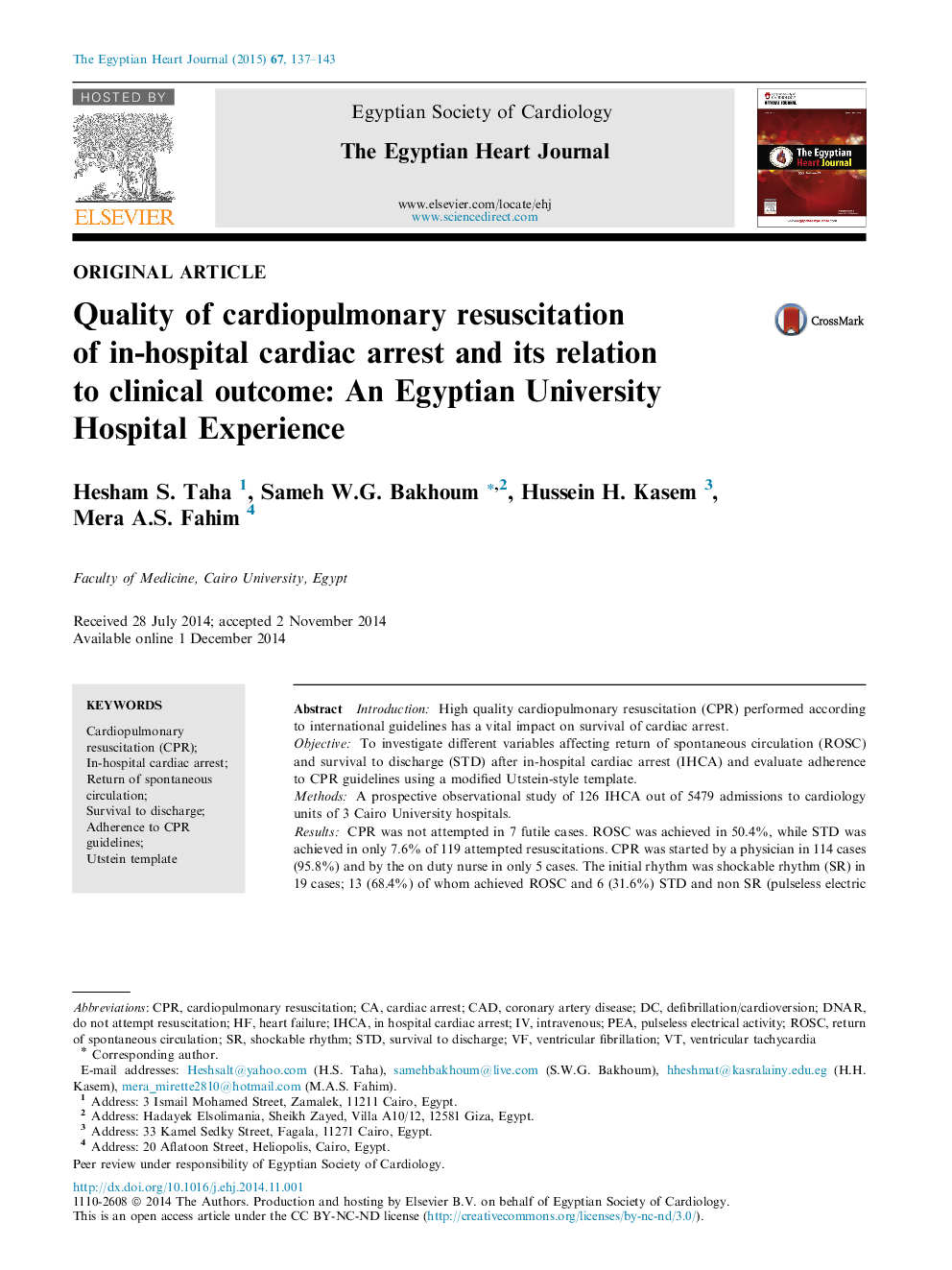| Article ID | Journal | Published Year | Pages | File Type |
|---|---|---|---|---|
| 2910562 | The Egyptian Heart Journal | 2015 | 7 Pages |
IntroductionHigh quality cardiopulmonary resuscitation (CPR) performed according to international guidelines has a vital impact on survival of cardiac arrest.ObjectiveTo investigate different variables affecting return of spontaneous circulation (ROSC) and survival to discharge (STD) after in-hospital cardiac arrest (IHCA) and evaluate adherence to CPR guidelines using a modified Utstein-style template.MethodsA prospective observational study of 126 IHCA out of 5479 admissions to cardiology units of 3 Cairo University hospitals.ResultsCPR was not attempted in 7 futile cases. ROSC was achieved in 50.4%, while STD was achieved in only 7.6% of 119 attempted resuscitations. CPR was started by a physician in 114 cases (95.8%) and by the on duty nurse in only 5 cases. The initial rhythm was shockable rhythm (SR) in 19 cases; 13 (68.4%) of whom achieved ROSC and 6 (31.6%) STD and non SR (pulseless electric activity/asystole) in 100 cases; 47 (47%) of whom achieved ROSC and 3 (3%) STD. Chest compressions were observed appropriate ⩾100/min, ⩾2 inches deep and interrupted <10 s in 99.2%, 92.4% and 48.7% of cases respectively. Initial SR and duration of CPR were independently associated with ROSC (both P = 0.01) and STD (P = 0.008 and 0.02 respectively). A cut-off value for CPR duration of 22.5 min had a sensitivity of 86.7% and a specificity of 81.4% in predicting ROSC by receiver-operator characteristics analysis.ConclusionThe poor STD despite a relatively good ROSC calls for improvement of CPR education and training for hospital personnel and better post CA care.
